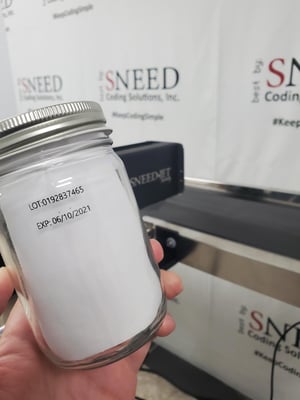
Many business owners and managers want to know what is lot coding to learn about the system’s purpose and inner workings. Understanding lot coding is a step in the right direction for any company that feels they need to consolidate and really consider how to manage their products.
Segment Batches by Their Lot
The basic principle behind lot coding is simple. A manufacturer takes a grouping of product units—determined by the date they were produced, their location, or other factors—and gives each one in that group the same lot number. These groupings are known as batches, which is why lot coding is sometimes referred to as “batch coding.” They can be applied to the product by hand, by stamp, or by a handheld printing device. An industrial inkjet printer can also be used to apply lot coding numbers.
Track and Recall Lots if a Problem Is Detected
Lot coding is primarily used for recall purposes. If a manufacturer gets a complaint about one product unit, such as it’s malfunctioning or dangerous, they can learn the lot number of that unit and track down every other member in its batch. This way, manufacturers can uncover if more units in that group are malfunctioning. If there are so many malfunctions that manufacturers must conduct a recall, they can use lot numbers to track down every unit in a batch and streamline the process.
Lot Coding and Regulations
Of course, the question “What is lot coding?” can yield many different answers. There are other ancillary advantages to using a lot coding system. For instance, lot coding can help a company stay ahead of regulatory compliance. For industries that are heavily regulated, like food, explosives, and pharmaceuticals, regulatory bodies are very rigid about how companies should store, supply, and sell their goods. A strong lot coding system that tracks the inbound and outbound of all goods will be an invaluable tool for giving the regulatory bodies the information they need.


